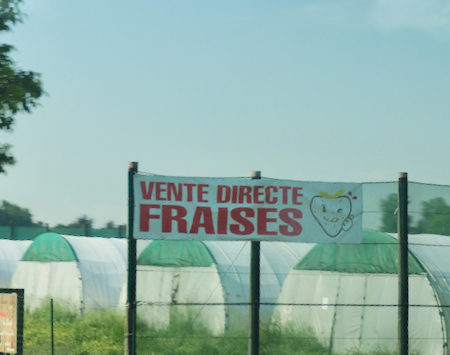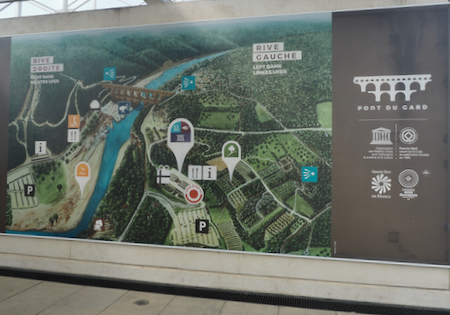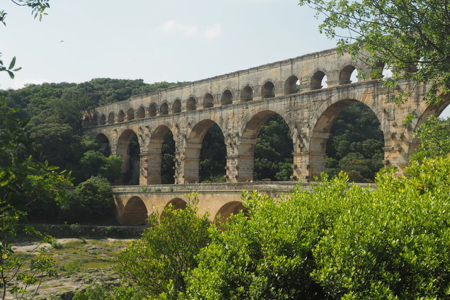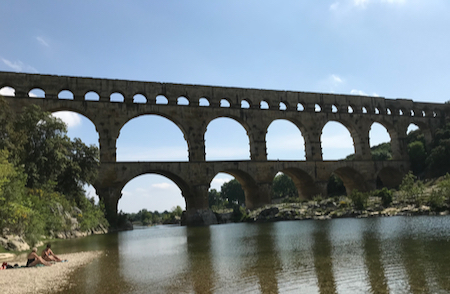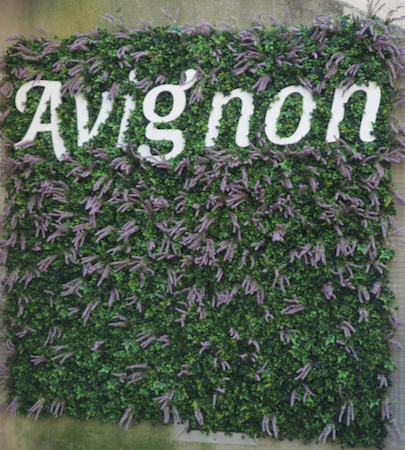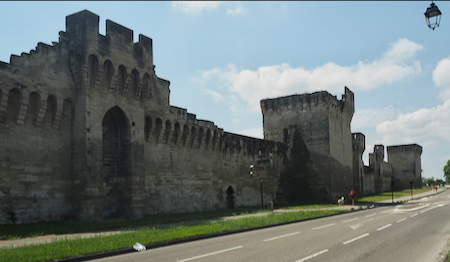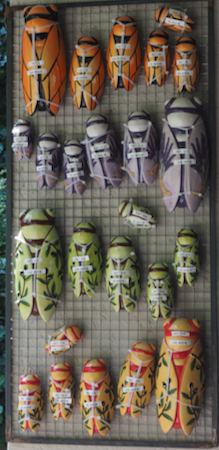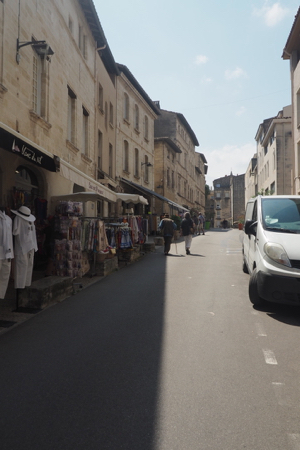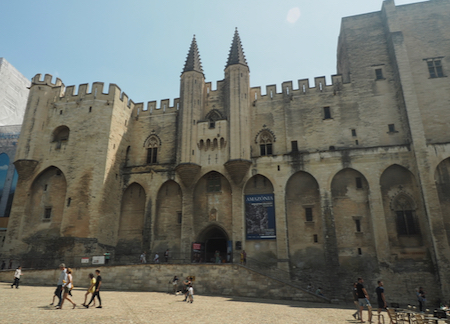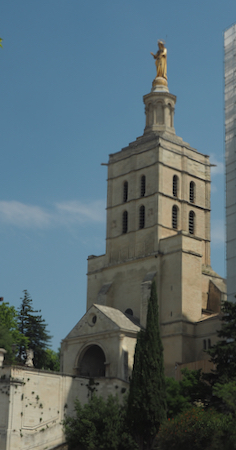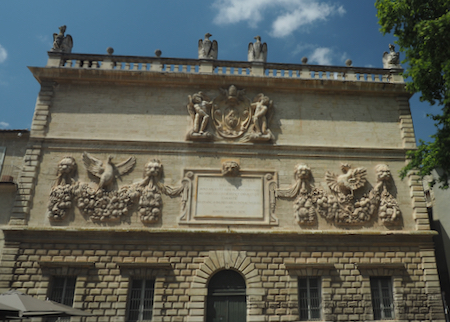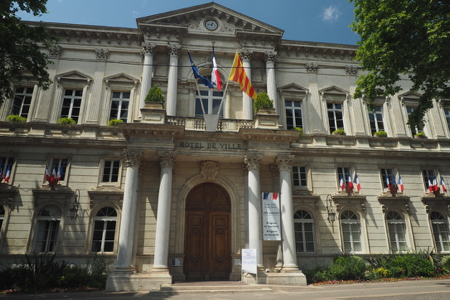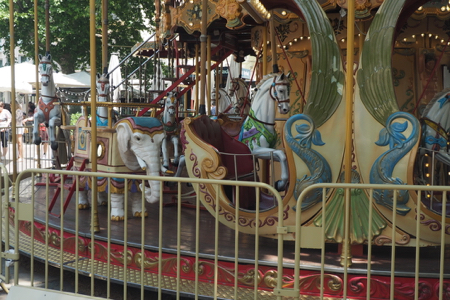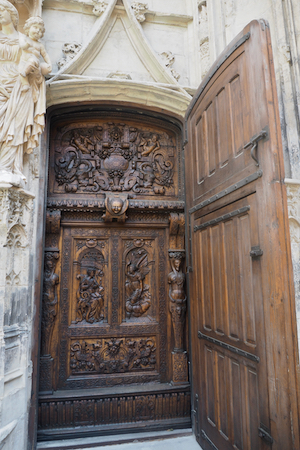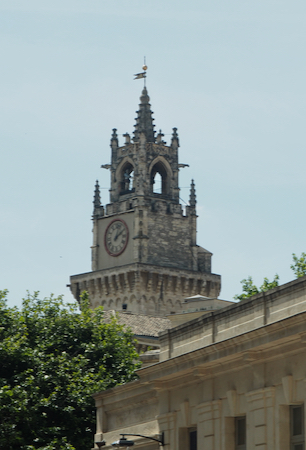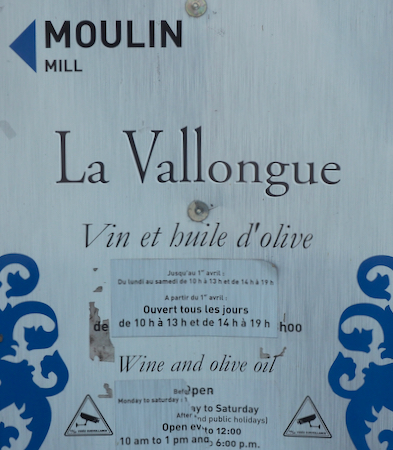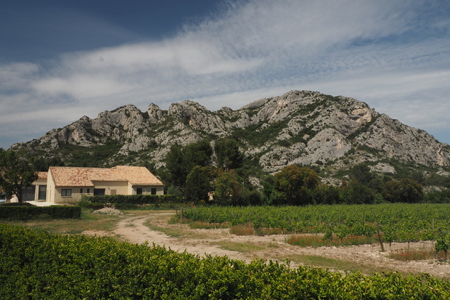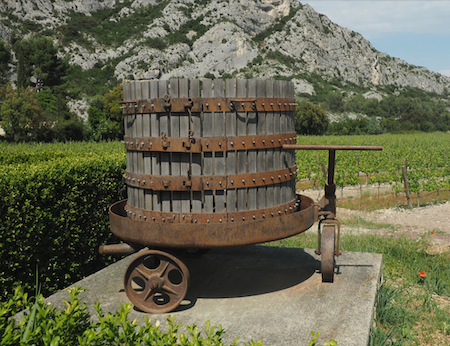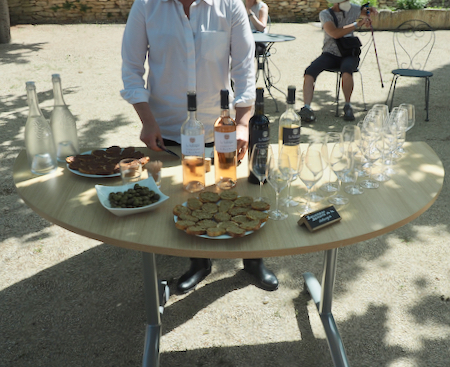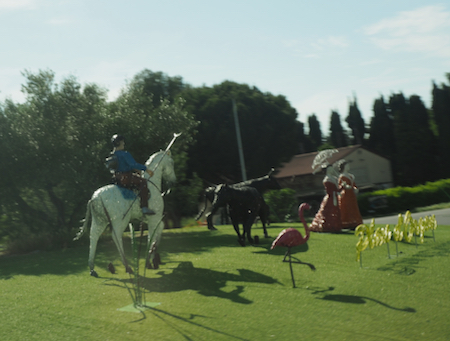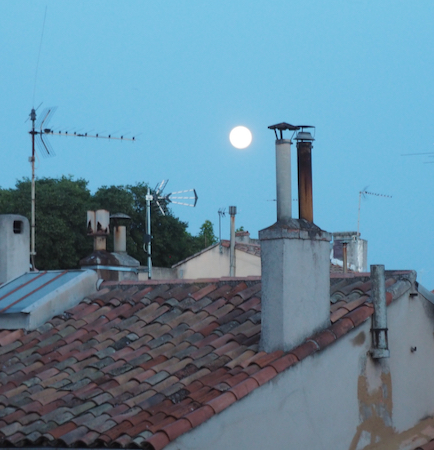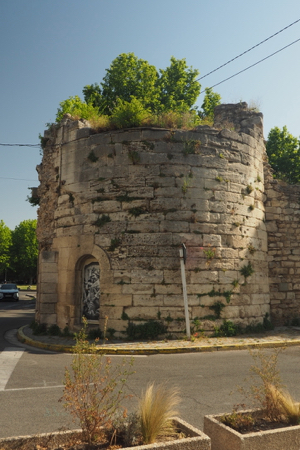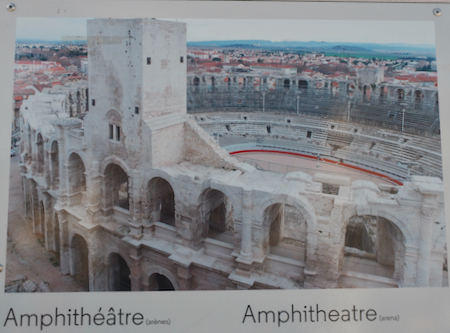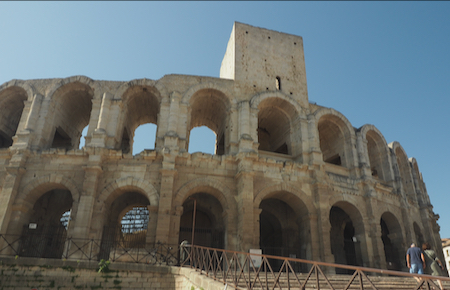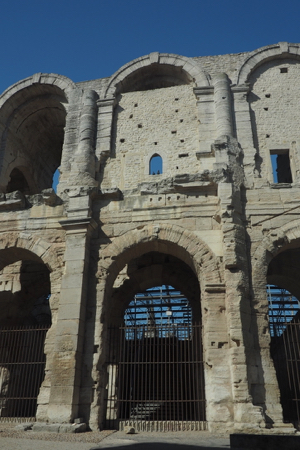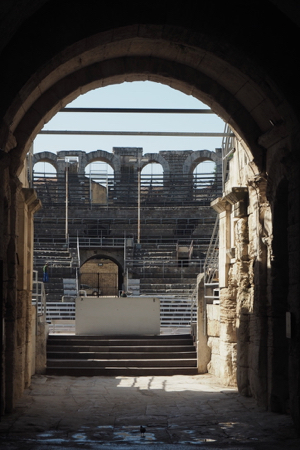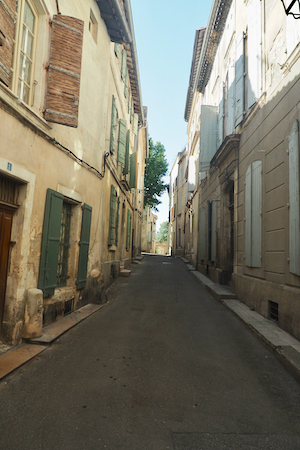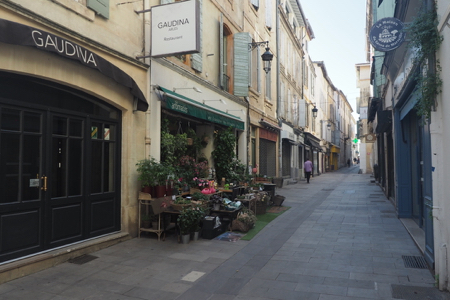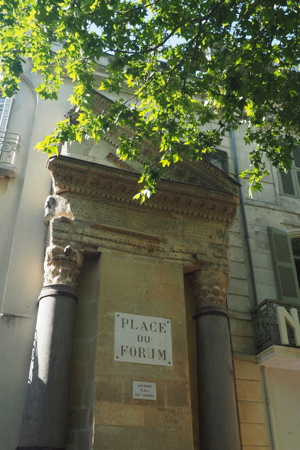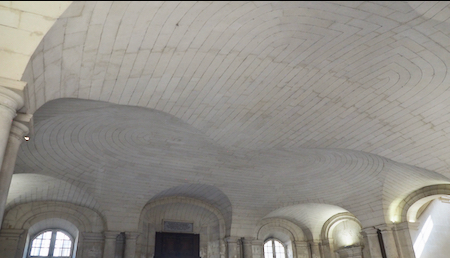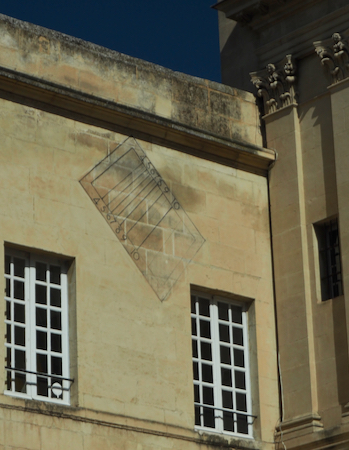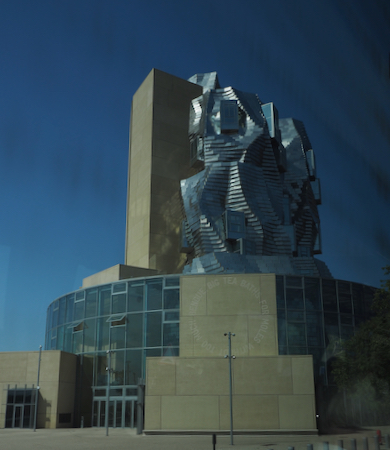Sun., 5/16 - Pont du Gard and Avignon
Our first stop today was at an UNESCO World Heritage site, the Pont du Gard. It is a Roman built aqueduct that has stood without repair for 2,000 years. It carried water from the mountains 20 km away to the city of Niems. It took five years to build and contains the largest Roman arched span. It has survived floods and people. We walked down under it and down to the Rhone River. The Pont is spectacular.
Growing strawberries
Nice cable-stayed bridge
Diagram of the Pont du Gard area
Pont du Gard
Pont du Gard
On the way into Avignon we parked outside the four kilometer long fortress wall and looked at the remaining section of the Pont d’Avignon or St. Benezet Bridge that once crossed the Rhone and connected France to the Papal State of Avignon and the fortress of the Pope. There were once 27 arches but now only four remain.
In Avignon we were given a brief tour and then had free time to find lunch and see the sights. Laurent walked us into the Place du Palais and pointed to the Pope’s palace (Palais des Popes) and the Papal bank which is now an art school; and to the main square (Place de l’Horloge) to see the bell tower, another merry-go-round, and the Hotel de Ville (City Hall).
St Benezet bridge
Fortress wall of Avignon
Just interesting
Cicadas (or Cigales) for sale
“According to Provençal folklore, "the cicada was sent by God to rouse peasants from their afternoon siestas to prevent them from becoming too lazy."
Street scene
Pope Clement V was elected in Rome in 1305 and since Rome was constantly under siege , he decided to rule from Avignon. This led to the “Schism” in the Catholic Church and the dueling popes in Rome vs Avignon. Seven popes were to sit at Avignon before the return of one pope at Vatican City. The palace is now entirely empty - all furniture, paintings, tapestries, everything was removed to Rome.
Pope's palace - Palais des Popes
Pope's palace - Palais des Popes
L'Hotel des Monnaies
Built in 1619, it served several purposes including being a music conservatory from 1860 to 2007.
Hotel de Ville - the City Hall
Opera Theater
Carousel in the town square
After lunch, we found our way to the Basilique Saint-Pierre d’Avignon. It was huge but was locked up shut so we did not see inside. It was also built like a fortress.
Basilica of Saint Pierre d'Avignon
Front door of the Basilica
Following the back alleys, we found our way back to the Papal Cathedral and went inside. It was nowhere near as ornate as Italian and Spanish churches we have visited. It had a chapel and an ante room with three large religious paintings. The black and white geometric glass window in the baptistry is unique.
Bell tower of the Basilica
Organ in the Papal Cathedral
Dome in the Papal Cathedral
Stained glass window in the Papal Cathedral
On the way back to Aix, we stopped at LaVallongue (long valley) winery and olive orchard to have a wine and olive oil tasting experience. Nothing exceptional.
Winery setting
Old wine press
Sampling time
Roundabout landscaping - many of the round-abouts in France are decorated with sculptures or fancy landscaping
A word about traffic circles. France has more circles than all the rest of the world combined. Every town and every intersection seems to have roundabouts instead of signal lights or stop signs. Supposedly, it is much safer because cars slow down on approach and look for a pass into the roundabout. Most towns decorate their circle centers and some are quite attractive.
Moon rise
Mon., 5/16/22 - Arles, Carcassonne, and Albi
Arles is an interesting city. It was once the capital of the Roman province on the Rhone River with easy access to the Mediterranean and, therefore, to Rome. Lots of wheat was grown around Arles and shipped off to Rome. A statue head of Julius Caesar was found in the river silt.
About 20 years ago the Rhone river flooded and covered the city in mud. The city has never fully recovered and is very poor. Arles is one of two French cities with a Communist Party mayor.
Sea gull on top of the world
Rampart of the old city wall
A memorial - words are in Latin
City street
Pretty street cafe
Arles has a quite well preserved Roman arena which is still used for bull fights and concerts. (They were setting up for a performance of Carmina Burana.) Two of the three original levels of the stage remain. There is a debate as to whether to restore the arena or let it crumble naturally.
Exterior of the amphitheatre
Exterior detail
Looking through one of the entries
Note that the upper right window is painted on - the others are real
Some of the many varieties of rice produced in the region
Another interesting door
Quiet street
Manhole cover
Another street scene
We walked into a square, Place du Forum, and looked at a cafe that Van Gogh had painted during the 14 months he lived in Arles.
Fragonard is everywhere
Town Hall with this amazing ceiling built by the architect who designed Versailles.
In the Place d’ Republic: a 13th c. Roman Catholic Church and a fountain with an obelisk.
A "sun dial" designed to work with the sunlight provided by the adjoining buildings.
On the way out of town the bus drove past the LUMA Arles Tower, the controversial art museum and cultural facility with round (arena) lower floors and metallic geometric pieces above like “the rocks of southern France mountains.” Designed by Frank Gehry (the Bilbao Guggenheim), the money was given by a rich Jewish woman whose relatives were protected by the town during the Nazi era. It will display the art her family has owned. Many in the town think the money could have been put to more practical use and help improve the town’s economy. Too bad we couldn't have toured the facility.
LUMA Arles Tower
To break up the long drive to Albi, we stopped in the Medieval walled city of Carcassonne. Since the OAT tour took us to Carcassonne for a couple days, the information and photos will be presented at that time.
The drive on toward Albi took us past Toulouse which is a large, wealthy city because, among other things, the Airbus factory is in the city. The Concord planes were made here as are the rockets used to launch French space satellites.
